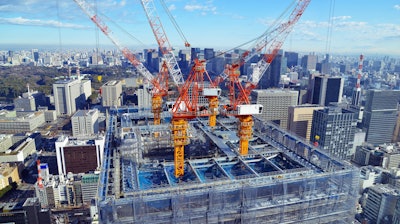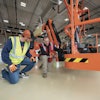
I like to read to stay current on what is happening in the construction industry, which could turn into a full-time job if I let it. So, I select publications that cut to the chase while providing the knowledge I seek, believing what they are telling me makes sense.
Right now, we have a lot of moving parts in the industry. What you do and where you do it can be a major factor in how well you perform compared to similar contractors in different regions.
To help put things into perspective, I listened to commentary by Steven Moore, a renowned economist heard on many TV and radio venues, who happens to be highly ranked in the Trump camp and who may soon become his chief economist. Moore stated that we are currently in the biggest construction boom this country has even seen, which will carry on for years to come. This is not hard to believe in many parts of the country, and for the sake of argument, let’s say that this statement is 90% correct.
If even remotely true, the “great construction boom” can be both a good thing and a bad thing, depending on where your company is in the normal life cycle of a contracting operation. If you are a well-managed company with a strong balance that is able to manage a job properly and produce an industry standard gross profit, I would say a robust market is a good thing. But if your company is in the early stages of development, this robust market could lead you down a harmful path where you overextend yourself to the point where you run out of cash at the first sign of a reduction in business activity.
Are You Prepared and Able to Expand?
Next, I picked up John Mauldin’s Thoughts From the Frontline weekly economic newsletter. It is an informative publication expressed in a manner that we can all understand and be able to make use of the data. If you don’t currently read John’s publication, you should sign up for it. The price is right — no charge.
The title of the August 18 issue was “The Good News Economy”, where Mauldin summarized all the good things happening in the economy that have led to the “biggest construction boom” noted above. In short, when the small- and mid-sized companies believe that business expansion is in the making, they have to plan to expand their business to take advantage of the situation by investing in new plants, equipment and people.
I think it is fair to say that Mauldin reinforces Moore’s statement about the construction boom. But even though I agree with them, I must refer you to the caveat above about being prepared and able to expand the business while avoiding catastrophic outcomes. I realize there is risk in all we do, but risk must be managed and kept at a manageable level, especially when planning out business expansion.
How does this impact your business? I bet a lot of you have already or are in the process of thinking:
- There is a big opportunity out there with my name on it.
- I am going to need more equipment and people.
- Aggressive pricing will be the norm because of the normal and “new” competitors in my market.
And what do you think I would say about that? The answer is:
- I agree the work is out there.
- Don’t get too crazy and load up on fixed debt or lease payments.
- Spend your money on good estimators and project managers who can bring the job in on budget.
- Before running out to take advantage of the new tax benefits related to new and used equipment purchases, rent most of what you need to get a feel for the market before making significant investments.
Let’s face it folks — if you load up on 60- to 72-month note obligations to obtain equipment, it better be able to generate 60 to 72 months of work. If you think about it, you may be kidding yourself. Hopefully, you don’t push the risk envelope to the point of no return and then have to return all your hard-earned equity to the bank.
Don’t Buy Based on Tax Benefits
The last article I picked up this week analyzed the new and used equipment markets, spelling out the virtues of the tax breaks available from Section 179 and Bonus Depreciation. The article spelled out how the tax benefits lower your purchase price of the equipment — which only works out if you get to keep the equipment and sell it for a reasonable residual value six to seven years down the road.
I’m not saying you shouldn’t take advantage of the tax breaks. But they are much more complicated than you think and deserve some time spent with a tax person who knows the game. I actually wouldn’t make a purchase decision based on taxes, because it only works if you are making a ton of taxable profit in the year of the purchase, and are assured to do the same in the following three to four years so you can use up the tax benefits at a meaningful tax rate.
In summary, I say:
- Take advantage of your market.
- Do not overextend yourself.
- Rent what you need. Only consider buying if you can’t rent it.
- Do what you do best.
- Stay on top of your work in process.
- Make a buck that puts you in the top tax bracket.
To wrap up and keep things in perspective, what comes after the “biggest construction boom” ever? If you’ve been paying attention, you should know the answer.


















